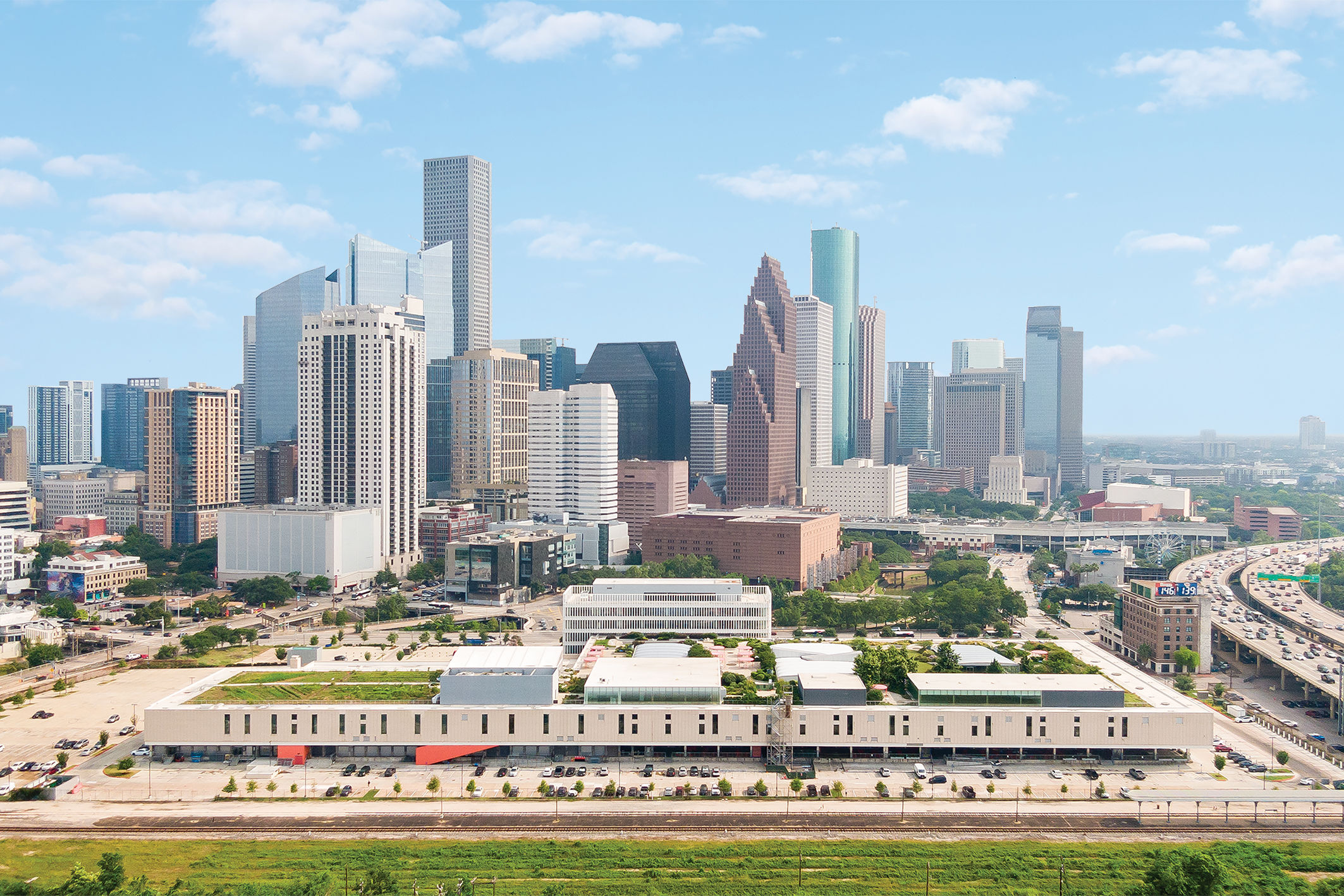Take an Early Look at the Orange Show’s Biggest Expansion Yet
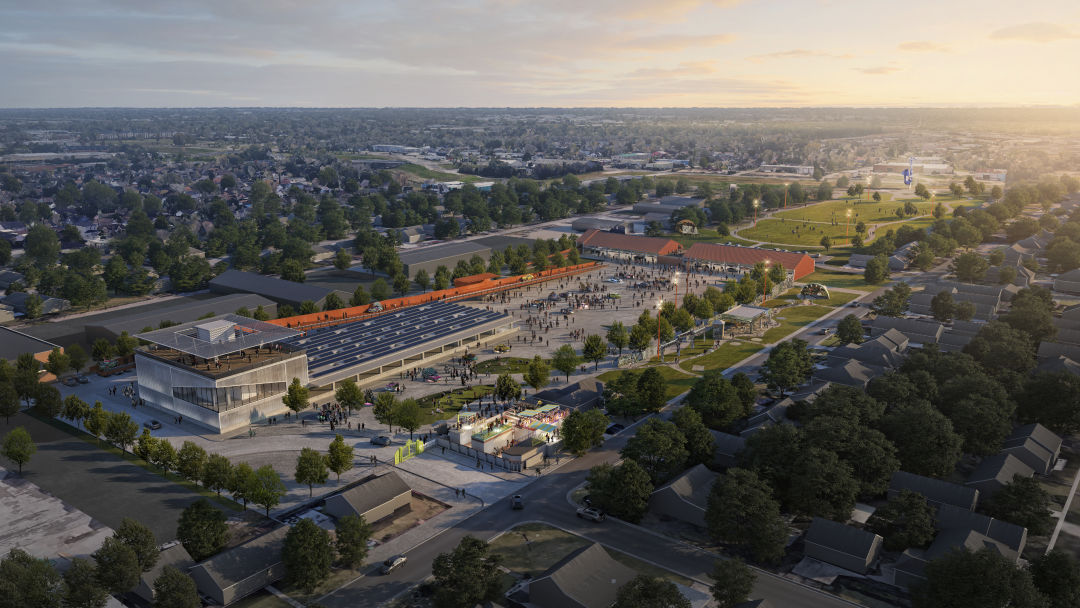
The Orange Show's expansion in Houston is set to be completed in 2026 or 2027.
Image: Courtesy Rogers Partners
Houston will soon be home to a more than seven-acre campus dedicated to recognizing the artist in everyone, as one of the city’s most beloved art landmarks plans a massive expansion.
At the heart of the new campus is the Orange Show, a whimsical complex built by one man for his favorite citrus. Tucked away in a small neighborhood behind the University of Houston, the quirky, maze-like monument was assembled by Jeff McKissack, a Houston postal worker, starting in 1956.
“All of the materials were salvaged from scrap yards and picked up from the side of the road and all of it hand-welded and handmade,” says Tommy Ralph Pace, executive director of the Orange Show Center for Visionary Art. “He had these huge visionary ambitions that as people were traveling down to Disney World, [the Orange Show] was going to be a big competitor.”
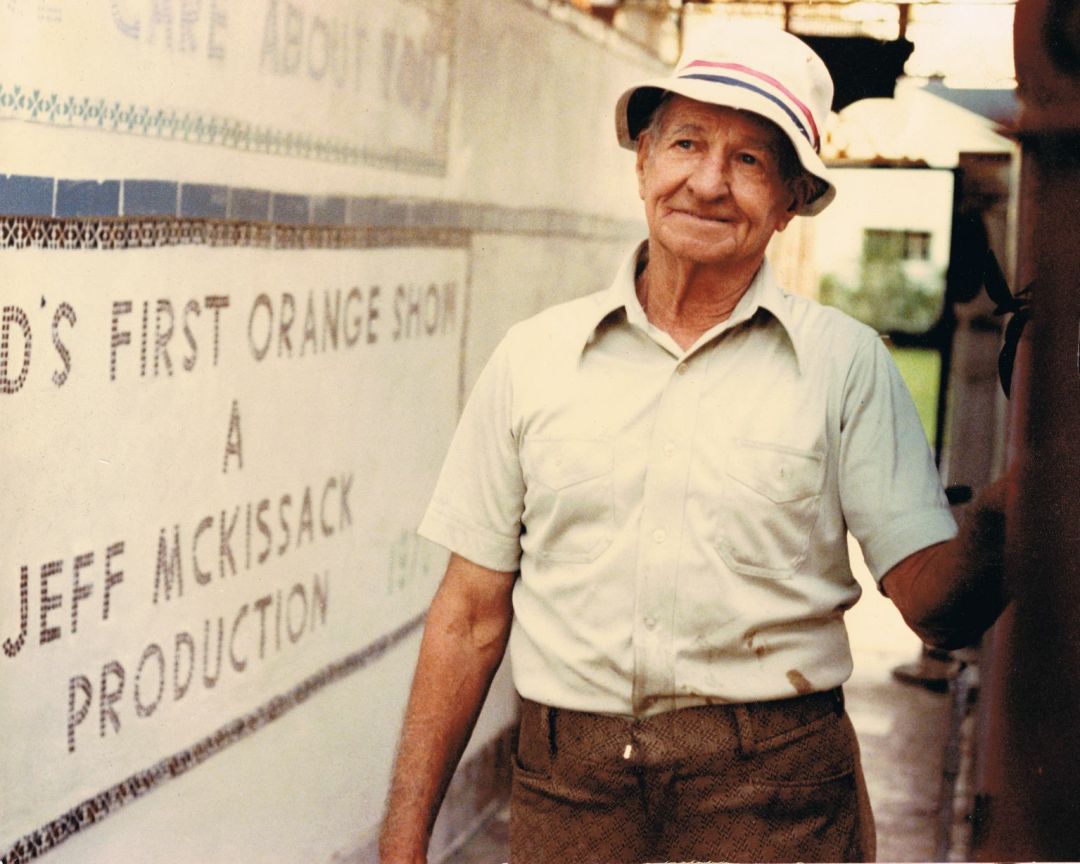
Jeff McKissack was the original mastermind of the Orange Show.
McKissack’s dream of rivaling Disney never materialized, but something magical did emerge from the creation: a nonprofit to preserve his 3,000-square-foot construction.
The Orange Show Center for Visionary Art (OSCVA) has evolved into a cornerstone of the Houston art scene. Since its conception in 1980, the nonprofit has not only safeguarded the Orange Show but also rescued and maintained the Beer Can House, has produced the annual Art Car Parade for the past 35 years, and developed Smither Park, which highlights mosaic artwork.
“Preserving two of Houston’s most iconic cultural landmarks was the beginning of our story,” Pace says. “It’s kind of the root of our mission, which is to celebrate the artist in everyone. This idea that ordinary people can make extraordinary things.”
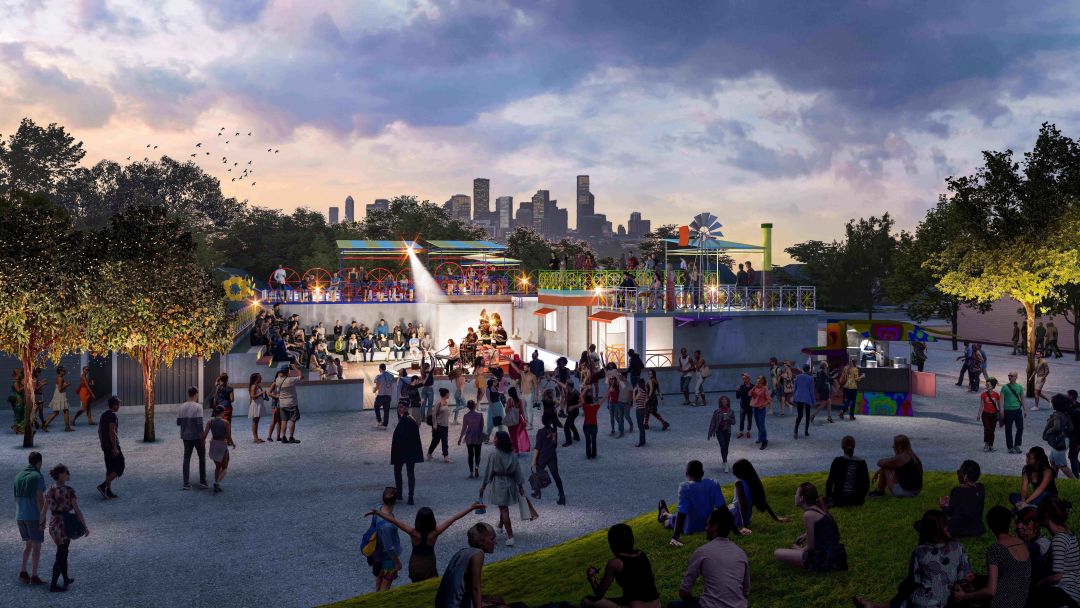
This expansion will be the Orange Show's biggest yet.
Image: Courtesy Rogers Partners
In 2017, OSCVA acquired a former pallet factory that sits on 5.7 acres adjacent to the Orange Show and Smither Park. The nonprofit announced plans in November 2021 to transform the property into a new campus, complete with performance venues and maker spaces.
One of the property’s two original buildings, which currently serves as OSCVA offices, will be demolished to make way for a two-story structure with an art gallery. The concrete building that served as the actual factory will be reimagined as a unique exhibition area where visitors can view a rotating display of historic and award-winning art cars.
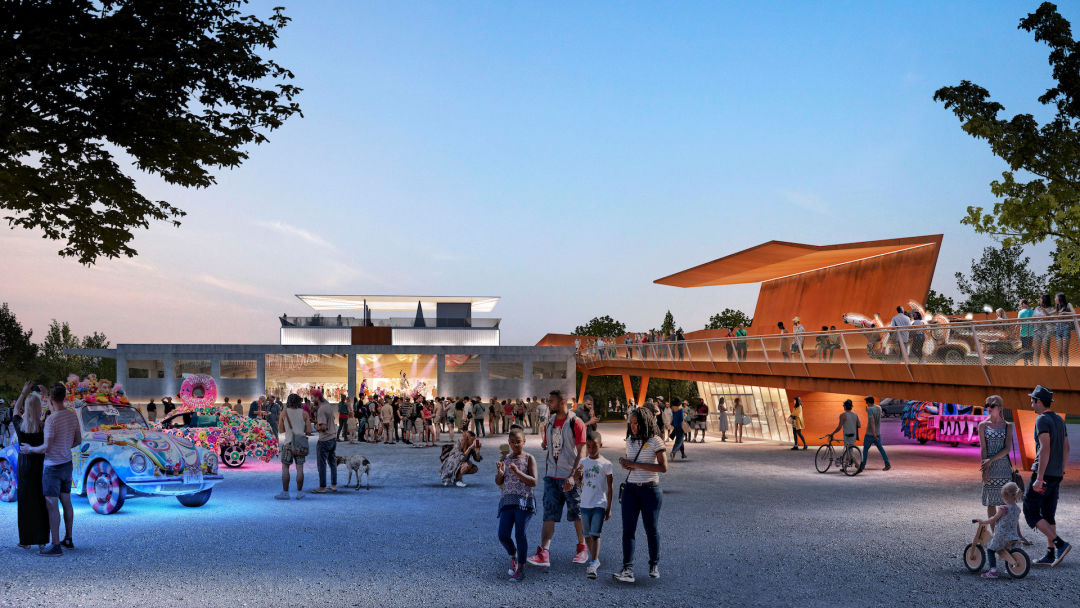
The new Orange Show campus will allow more interaction with art cars.
Image: Courtesy Rogers Partners
An 800-foot-long ramp will serve as a promenade for visitors and a place to park art cars. Smither Park will also be expanded with a new Mosaic Alley. A warehouse behind the pallet factory, owned by the OSCVA since 2004, will provide space for restoration work, classes, and more. Pace said they hope to have more news to share about the expansion in February 2024, with a target completion date in 2026 or 2027.
“Our project is really a lot about adaptive reuse,” Pace says. “It’s really a big renovation and then, of course, transforming that lot into a more hospitable parklike environment with shading and trees and other amenities.”
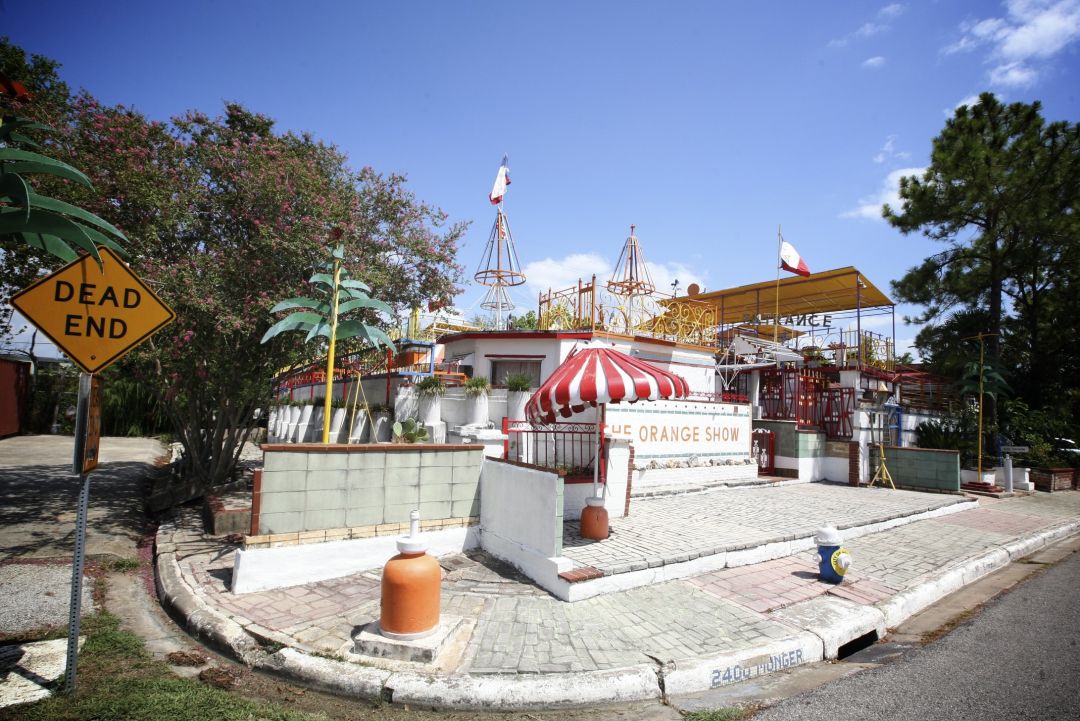
The Orange Show sits in a quiet nook behind the University of Houston.
Image: CC/Flickr/Ed Schipul
The plan also involves creating a seamless connection between OSCVA and the public park next to it, the 20-acre Fonde Park. “Of course, Fonde Park is a city park and it’s not ours,” Pace says. “But we are excited to inspire people to go visit it more because it is underutilized.”
Fonde Park is likely to see even more visitors with the future installation of a pertinent piece of Houston art: the Smokesax by Bob “Daddy O” Wade. Originally commissioned as signage for a jazz club, the imposing blue saxophone was constructed from eclectic items such as a Gulf Coast oil field pipe, a Volkswagen Bug, and surfboards. The sculpture was donated to OSCVA in 2012, and will find a new home along the Bayou Greenways trail system that flows adjacent to the park.
“We are excited to restore it and bring it back to life here,” Pace says. “A real signature part of our story is that this neighborhood deserves to have amazing art in it, not just the Museum District.

Part of the Orange Show's mission is to bring art to other neighborhoods outside the Museum District.
Image: Courtesy Rogers Partners
The neighborhood surrounding the Orange Show has also always been a part of the nonprofit’s mission. “We understand that our development here will drive some change in this neighborhood,” he says, “but we’re working really closely and having a lot of open dialogue with our neighbors on how we can support protecting the neighborhood as well.”
That includes logistics like parking. Pace says that the new campus aims to improve neighborhood traffic by providing parking for the numerous events it hosts, including Zine Fest Houston. Currently, OSCVA provides the neighbors with yard signs to discourage event parking in front of the homes.
“We’ve been in this neighborhood since the beginning,” Pace says. “This neighborhood is our neighborhood and we want to protect it.”
The Orange Show over the years
1956: Jeff McKissack begins building the Orange Show.
1980: The Orange Show Foundation is formed. (It was later renamed the Orange Show Center for Visionary Art in 2003.)
1988: The first Houston Art Car Parade takes place.
2001: The Orange Show Foundation acquires the Beer Can House.
2016: Smither Park has its grand opening.

